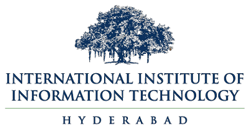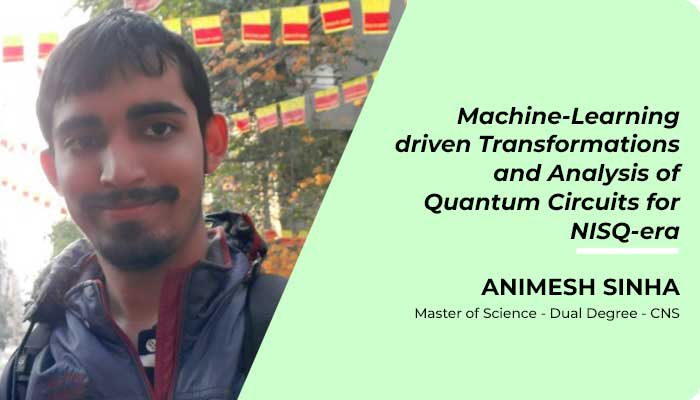Animesh Sinha received his Master of Science – Dual Degree in Computational Natural Sciences (CNS). His research work was supervised by Prof. Harjinder Singh. Here’s a summary of of his research work on Machine-Learning driven Transformations and Analysis of Quantum Circuits for NISQ-era hardware:
Quantum Computation is one of the most promising futures in furthering computing power and increasing the computational scientific simulation ability. However, the present-day quantum devices suffer from several limitations, a small number of qubits, limited connectivity, noisy evolution, and others. Therefore, the need of the hour is to come up with both hardware-based and algorithmic changes to mitigate these limitations and put forth a step toward a quantum computer that achieves supremacy over its classical counterpart. The primary focus of this dissertation is to present a method of efficiently compiling quantum circuits on present-day hardware to minimize the effects of limited connectivity and effects of noise. Further, we explore a class of hybrid quantum classical algorithms called variational quantum circuits and attempt to characterize their properties, evolution, and advantages. First, we provide the requisite background in quantum computing, variational quantum methods, deep learning, and reinforcement learning. Next, we present qRoute, a reinforcement-learning based solution for compiling quantum circuits onto present-day hardware. We elucidate the method that QRoute uses for depth minimized compilation, which is essentially a Monte-Carlo tree search put together with a graph neural network to decide which parts of the tree to explore. We discuss the details of the algorithm, the key points of innovation that differentiate it from the previous methods, and the state-of the-art results it achieves on various circuit compilation benchmarks. Finally, we move to the application of quantum computers in solving real-world problems and discuss the circuits called variational quantum circuits. We present a framework qLEET for characterizing the training paths, loss landscapes, entanglement capability, and expressibility of these circuits, and we provide a use-case example in analyzing an algorithm called QAOA for computing the Max-Cut of a graph, which is an NP-complete problem and require time exponential in the number of nodes on a classical computer. All code for qRoute and qLEET has been released to the open-source community and provides easy and modular access to endpoints where our algorithms can be tweaked for further research in this domain.
Publications
- Animesh Sinha, Utkarsh Azad, and Harjinder Singh. “Qubit Routingusing Graph Neural Network aided Monte Carlo Tree Search.” Proceedings of the AAAI Conference on Artificial Intelligence 2022, arXiv e-prints (2021): arXiv-2104.
- Utkarsh Azad and Animesh Sinha. “qLEET: Visualizing Loss Landscapes, Expressibility, En tangling power and Training Trajectories for Parameterized Quantum Circuits.”, arXiv e-prints (2022): arXiv-2204.
April 2023

